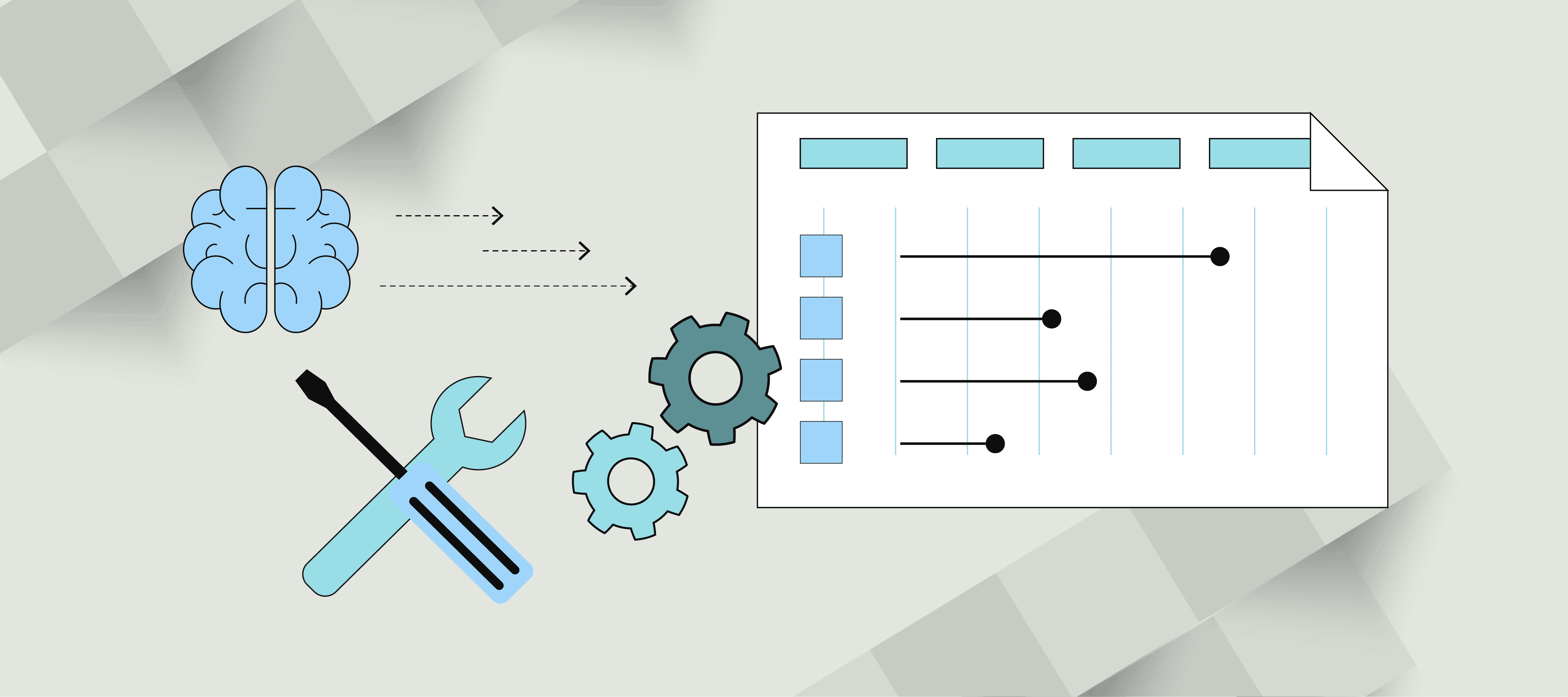8 minute read
The importance of AI for product managers continues to grow, making it critical to continuously expand and enhance your AI skills. This article offers an abundance of AI resources specifically curated for product managers.
You can’t watch the news or scroll social media without running across a story about Artificial Intelligence (AI) . Since Chat GPT was unleashed on November 30th, 2022, by OpenAI, AI has entered nearly every aspect of life, from entertainment to work. The rapid rise and inclusion of AI in the workplace has been especially profound since it impacts your ability to be effective and stay sharp in an increasingly competitive job market.
The relevance of AI in product management has grown significantly, moving from a curiosity to a necessity, and for good reason. AI offers significant advantages that can shape the future of product development and decision-making. In this article, we will learn about the importance of AI in product management and methods to learn and grow your AI skills as a product manager.
The Growing Relevance of AI for Product Managers
AI is used for far more than simply automating tasks. It has transformed how product managers approach everything from gathering customer feedback to how they make decisions. By leveraging AI, product managers can harness vast amounts of data to gain deeper insights into customer behavior, market trends and potential opportunities.
AI empowers product managers to be more data driven, which allows for more precise and informed decisions. Ultimately, this helps organizations create products that better meet customer needs and preferences.
AI is also revolutionizing product development through automation. For instance, machine learning algorithms can analyze user feedback and historical data to optimize product features and even suggest new product ideas. This not only accelerates the development process but also enhances the quality of the products being developed. This reduces time-to-market and increases the likelihood of product success.
Why Product Managers Should Learn AI
Understanding and utilizing AI offers a distinct competitive advantage to product managers. As AI continues to reshape industries, product managers who are proficient in AI can help lead their organizations in adopting these technologies effectively. This proficiency allows them to identify and implement AI-driven solutions that streamline product development and create products that stand out in the market.
As AI inevitably becomes more embedded in product management tools and processes, product managers who are already adept in AI will be much better positioned to lead projects. Additionally, this experience gives them a competitive edge in the job market. In short, AI is not just a tool for enhancing existing product management practices, it’s a transformative force that can elevate product managers.
AI for Product Managers: The Basics
Harnessing the power of AI can be a game-changer, but getting started can be intimidating. There are so many applications for AI, and many AI tools to choose from, it’s hard to know where to begin.
So how do you learn about this emerging technology and apply it to your role? Let’s look at some helpful AI information for product managers as well as ways you can continue to stay ahead of the curve.
How Does AI Work?
AI works by using algorithms and models to process large amounts of data, identify patterns, and make predictions or decisions based on that data. Machine learning, a subset of AI, enables systems to improve their performance over time by learning from past data without being explicitly programmed for every task. This is sometimes called “training,” and it takes a vast amount of data to train AI. This process is never complete but rather a continual process intended to improve the output and performance of AI.
On a more practical note, in some applications, AI simulates human intelligence to produce human-like results. This is probably what comes to mind when you think of AI and tools like ChatGPT for writing documents or PIXLR for creating images.
Looking at how ChatGPT works is a great way to better understand the connection between AI, machine learning and practical applications for its use.
- ChatGPT utilizes a machine learning model known as a transformer neural network, specifically fine-tuned on a diverse range of internet text. This robust training gives the model wide-ranging language comprehension, allowing it to generate human-like text based on input.
- ChatGPT has a knack for simulating an understanding of the context of a conversation. In turn, it generates responses based on patterns learned during training. So, while it does not comprehend in the same sense a human does, it can provide relevant and nuanced responses.
So when you ask ChatGPT a question, it can respond in a human-like way, using the vast amount of material it has been trained with or has access to in order to generate a response.
AI Tools
While we mention ChatGPT often because it is perhaps the most known, there are dozens of AI tools currently available. Here are a few additional AI applications which can do everything from generate text and images to analyze PDFs and data sets:
Basic AI Terminology
As you begin your journey into AI, you’ll encounter a variety of new concepts and terminology. While it’s impossible to cover everything in one place, familiarizing yourself with the following key AI terms will provide a solid foundation and help you navigate this fascinating field with greater confidence.
Artificial Intelligence Ethics: The branch of AI that is concerned with AI systems and their ethical implications. This includes issues like bias, fairness, accountability and the societal impacts of AI technology.
Deep Learning: Deep learning, which is actually a subset of machine learning, uses neural networks with multiple layers, enabling the system to learn complex patterns. These “deep” layers allow deep learning to tackle problems that require cognitive-like processing, making it effective for solving tasks that involve advanced pattern recognition.
General AI: Refers to AI that can understand, learn and then apply knowledge across a large range of tasks. Essentially, general AI possesses the ability to perform the same intellectual tasks that humans can.
Machine Learning (ML): Machine learning is actually a subset of AI where machines access data and use it to learn independently. It’s rooted in the idea that machines should learn and adapt through experience.
Narrow AI: This refers to AI that is only trained to perform a specific task, like AI that only acts as an image recognition system or a voice assistant
Natural Language Processing (NLP): This is a branch of AI focused on enabling computers to interact with humans through natural language. Its goal is to read, interpret, and understand human language in a meaningful way.
Learning AI for Product Managers
Truly learning AI for use in your role as a product manager is a process. While mastering AI requires far more than a single article can offer, this guide will provide you with a learning plan to help you effectively build and grow your AI skills. Once you are comfortable with the basics, it is advisable to seek official professional development in the form of continued education.
Build a Foundation of AI Skills
As with any new skill, learning the basics is the starting point of building your AI skills as a product manager. You can get started by diving into the topic and learning everything you can from easily available sources like books and videos.
Watch Videos: Watching videos that discuss AI and explain how to use common AI tools is a quick and simple way to get started. You can find these online and watch them in your free time.
Books, Blogs and Forums: Books and blogs let you tailor your learning to topics that are most interesting and helpful to you. You can find books on broad and general topics like the history of AI or very specific topics, like prompt engineering or using AI for product management. Forums are unique in that they allow you to ask questions, listen in on conversations and learn from others.
- AI Made Simple (Book)
- Product Managers Playbook for Generative AI (Free eBook)
- The AI-Powered Product Manager (Book)
- The AI Blog (Blog)
- Google AI (Blog)
- AI Forum Hub (Forum)
- R/Artificial (Reddit forum)
Hands-On AI Practice for Product Managers
Experimenting with AI tools is a great way to gain practical experience. It gives you the opportunity to play with AI tools at your own pace and tailor your experimentation around areas that are most applicable to your goals. The possibilities are just about limitless, but here are a few ideas to get you started.
Exercise A: Creating a Product FAQ with ChatGPT or a Similar Tool
Objective: Use ChatGPT or a similar tool to generate a comprehensive FAQ section for a hypothetical product.
Exercise: Start by inputting a prompt describing the product, its features, and potential customer queries. For example, “What are the key features of [product]?” or “How do I troubleshoot common issues with [product]?” The goal is to learn how to guide the AI tool in generating clear, concise, and accurate responses that could be used in a customer-facing FAQ.
Learning Outcome: This exercise helps you understand how to craft effective prompts to get useful, customer-oriented content, which is essential for product managers working on customer support or marketing materials.
Exercise B: Analyzing Customer Feedback Data
Objective: Use ChatGPT to analyze customer feedback data from an Excel spreadsheet and generate insights or summaries.
Upload data: Upload a CSV file with customer feed to ChatGPT. It should have columns like “Customer ID,” “Feedback Text,” “Rating (1-5),” and “Date of Feedback.”
Generate Prompts: Ask ChatGPT to summarize the key themes in the customer feedback. For example, “Analyze the feedback data and summarize the most common customer complaints.” Use prompts to generate insights, such as, “What are the top 3 areas of improvement based on the customer feedback?”
Refine the Output: If the initial output is too broad or misses key details, refine your prompts to ask for more specific insights. For example, “Based on the ratings, identify which feedback correlates with low customer satisfaction and explain why.”
Learning Outcome: This exercise helps you understand how to use ChatGPT with structured data. It teaches you how to craft prompts that effectively guide ChatGPT in generating summaries, extracting key insights and making data-driven decisions.
If you are not getting the response you expect, try changing some aspect of your prompt or the data you have offered, and see how it alters the results. This approach can also be adapted for other types of data, such as sales figures, user engagement metrics, or survey results, making it a versatile tool for learning how to leverage AI in data analysis.
These small exercises are no substitute for seeking continued education or professional development, but they are a fantastic way to develop AI skills.
AI for Product Managers: Courses and Workshops
AI courses and workshops are a great way to broaden and deepen your knowledge of AI tools and how to utilize them in the workplace. These sessions provide a structured learning environment, hands-on activities and the opportunity to engage with experts in the field.
This is no different than any other type of professional development or continuing education, so you may be able to get your employer to cover the cost.
AI Training for Product Professionals
Advanced AI Techniques for Product Marketers
Google AI YouTube Course for Beginners
While mastering AI is a journey that requires ongoing learning and practice, starting with the foundational knowledge and practical exercises outlined in this guide will set you on the right path. Continuing to build your AI skills will enhance your ability to make data-driven decisions and create innovative solutions that align with customer needs. It will also help you keep pace with the job market and ensure that you can stay competitive for top positions.
The future of product management is intertwined with AI, and by embracing this technology, you will position yourself to lead and innovate in this rapidly changing landscape.
Author
-

The Pragmatic Editorial Team comprises a diverse team of writers, researchers, and subject matter experts. We are trained to share Pragmatic Institute’s insights and useful information to guide product, data, and design professionals on their career development journeys. Pragmatic Institute is the global leader in Product, Data, and Design training and certification programs for working professionals. Since 1993, we’ve issued over 250,000 product management and product marketing certifications to professionals at companies around the globe. For questions or inquiries, please contact [email protected].
View all posts








